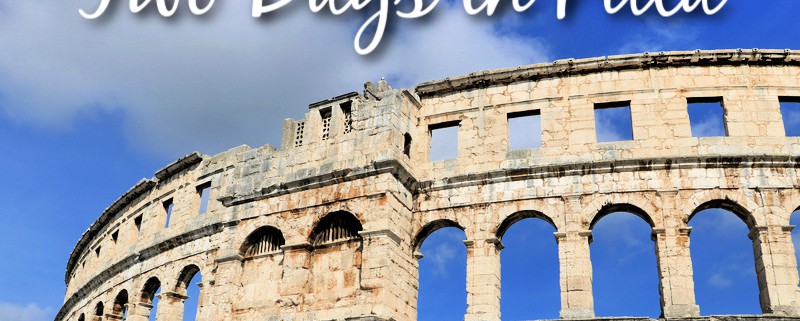
Pula is absolutely suitable for a short 48-hour visit – perhaps as part of a longer stay in gorgeous Istria or elsewhere in Croatia, or as a standalone city break! The region’s main town has plenty in the way of sights – particularly amazing Roman ones – a fantastic choice of accommodation, beautiful nature practically on its doorstep and plenty of lovely restaurants, bars and cafes. Here’s what we think you should do for two days in Pula.
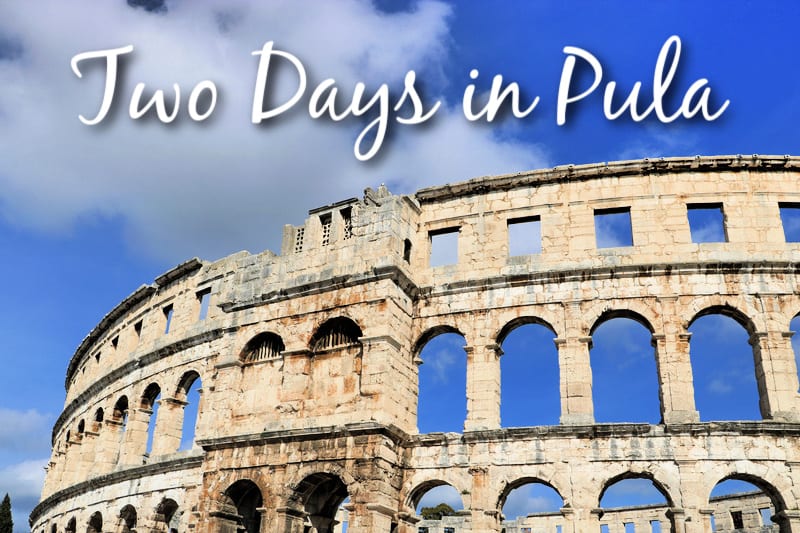
Two Days in Pula Itinerary
Day 1 AM – Hit the Roman Sights
Where better to start your two days in Pula than with the city’s Roman sights…in fact with the Roman sight. The astonishing Arena is a Roman amphitheatre that was constructed in the first century AD. It is the best-preserved Roman amphitheatre in the world (with all four “walls” still in place) and the sixth largest still standing; it also has an excellent position right by the Adriatic Sea.
As you approach the Arena from the outside you really do get a sense of its magnitude and importance to the town – especially so in comparison to the smaller buildings all around. Make sure to snap plenty of photos from the outside before entering the Arena. Once inside, stroll around the main floor and imagine the uses this venue would have had over the years. In Roman times it was of course used for gladiatorial fights; in later years, fairs and public gatherings were held here.
These days, it is occasionally used as a concert venue, and also for film screenings during the Pula Film Festival. Be sure to check local listings to see if any events are taking place in the Arena during your visit; attending one such event would be a magical addition to your stay! Or how about a gladiatorial fight? No, really! Spectacula Antiqua stage such “fights” on some summer evenings.
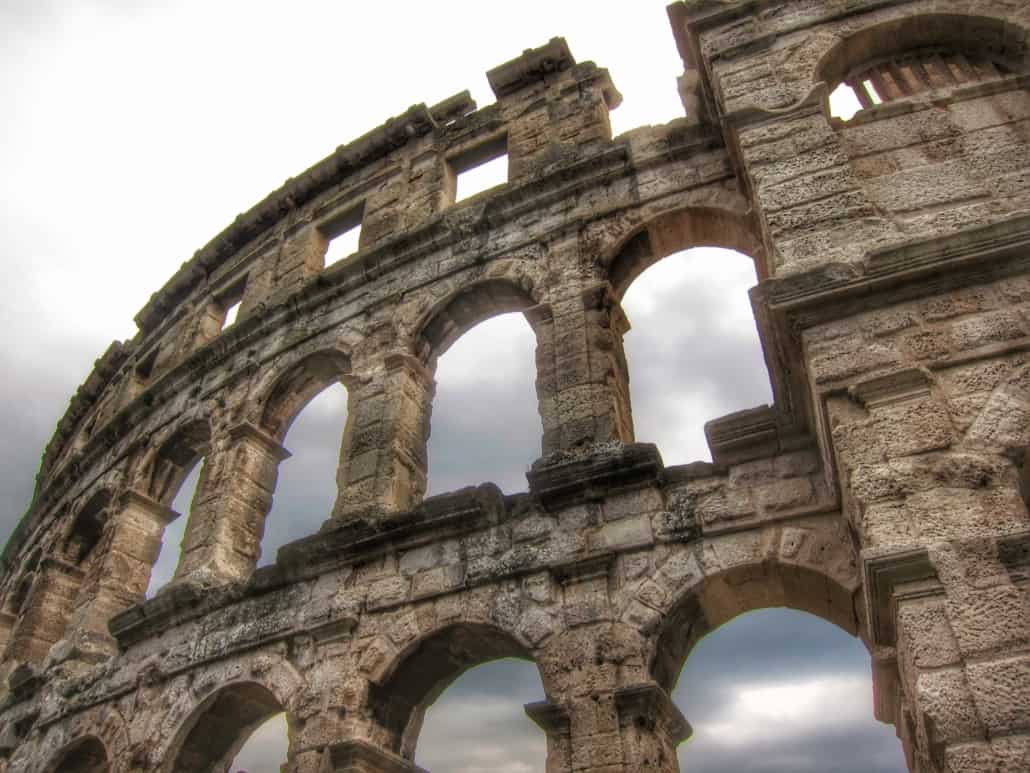
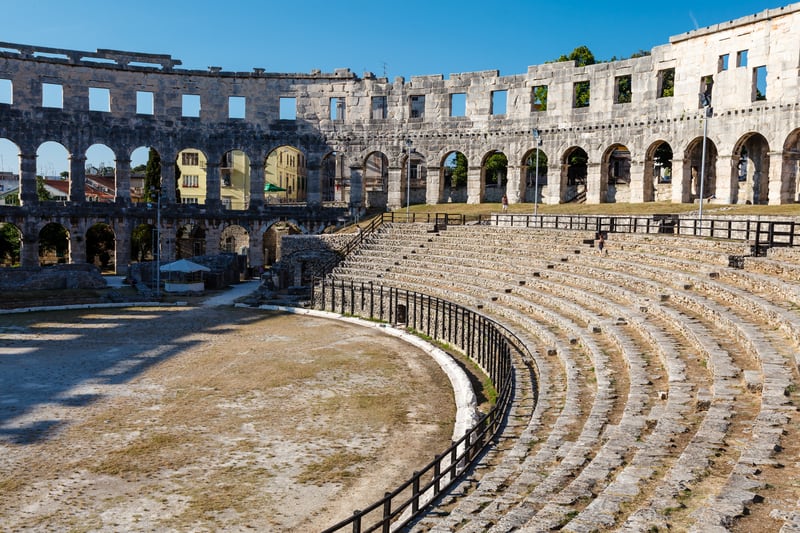
Head inside to the underground chambers of the Arena for an impressive collection of amphorae and also to see an exhibition on olive oil production over the years as well as some more information about Pula and Istria in the Roman Empire. This underground portion of the Arena was used to house animals and also where fighters remained before their bouts.
Once you’ve had your fill of pretending to be a gladiator, exit the Arena and make the short walk to the Temple of Augustus. Originally built in the 1st century AD and dedicated to the first Roman Emperor Augustus, this 14m-high temple was sadly completely destroyed during World War II and rebuilt between 1945 and 1947. It still stands very impressively today. You can enter the temple (for a fee) to see an exhibition of ancient stone and bronze sculptures.
The Temple of Augustus stands on the Forum which has long been the focal point of Pula life over the centuries and continues to be so today. You’ll also find the Communal Palace (and the tourist office) located here. Marvel at all the people enjoying their day here, not least in the numerous cafes!
Next, wander through these pretty pedestrianised streets to the Arch of the Sergii, the third wonderful Roman sight in Pula. Likely built in the 1st century BC as a triumphal arch to honour the prominent local Sergii family, the arch was also once used as a city gate.
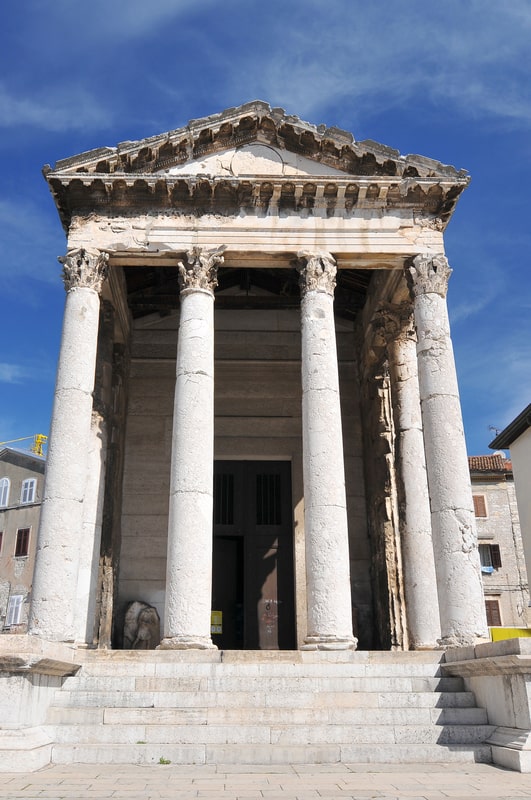
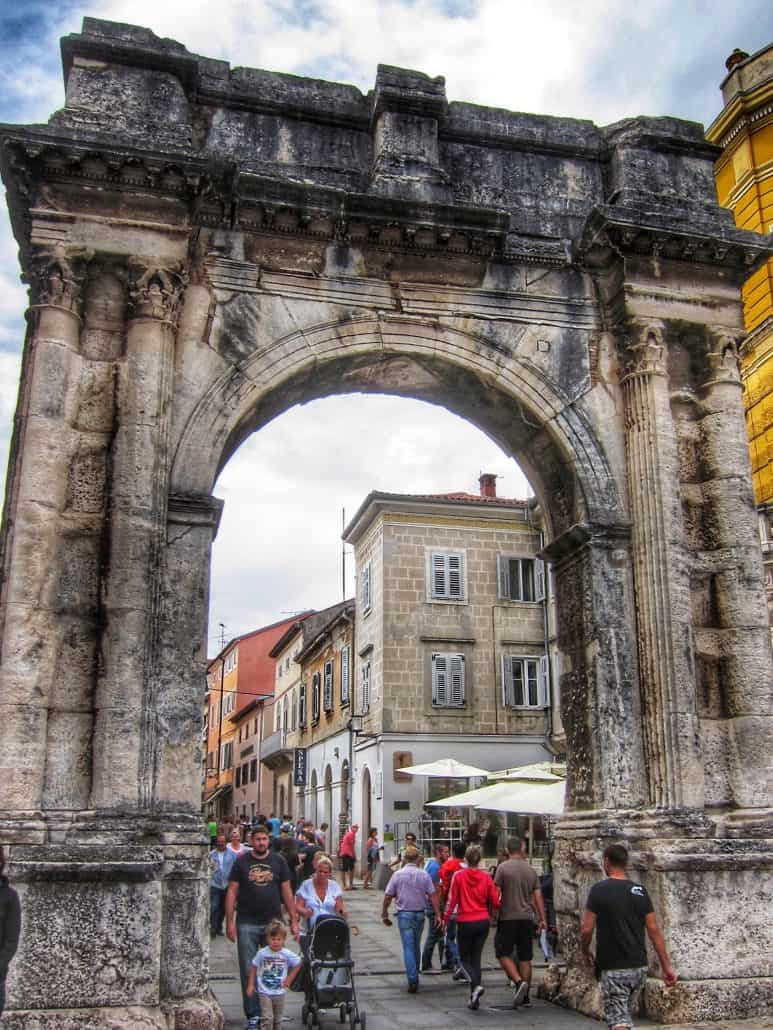
Day 1 – Lunch
Now is the perfect time to rest your feet and indulge in some Istrian cuisine! Piazza Nove is an excellent mid-range place that serves up all manner of local specialities, including pasta dishes and fish and seafood options.
Day 1 PM – Going underground
Now that you’ve refreshed yourself with a (hopefully) hearty lunch, head to check out the Zerostrasse Tunnels. This relatively vast network of tunnels were constructed beneath Pula on the eve of World War I to shelter the population and also to protect the city’s army and naval personnel as well as to serve as an ammunition store. These were added to after World War II to also provide “atomic shelters” and the total network of these shelters could today potentially house 50,000 people.
These days – thankfully – the tunnels are solely a visitor attraction with exhibitions often held inside. They’re also a great idea during peak summer months; regardless of the heat outside, the temperature in the tunnels never exceeds 18C.
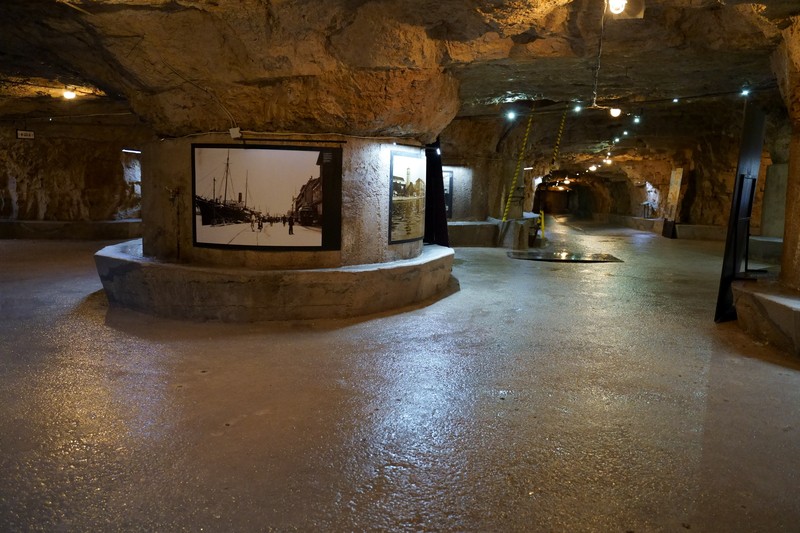
The tunnels pass underneath Kastel, the largest hill in Pula which is central to the history of the town and the wider region. Today you will find a 17th-century Venetian fortress located here; there is evidence, however, that the local Histri population built a fort here in the 1st century BC, prior to Roman occupation. When the Romans gained control of Pula they too initially established a base on Kastel.
Kastel is worth a visit, of course, to explore the Venetian-style fortress, but also to take in the excellent views over the city and out to the Adriatic
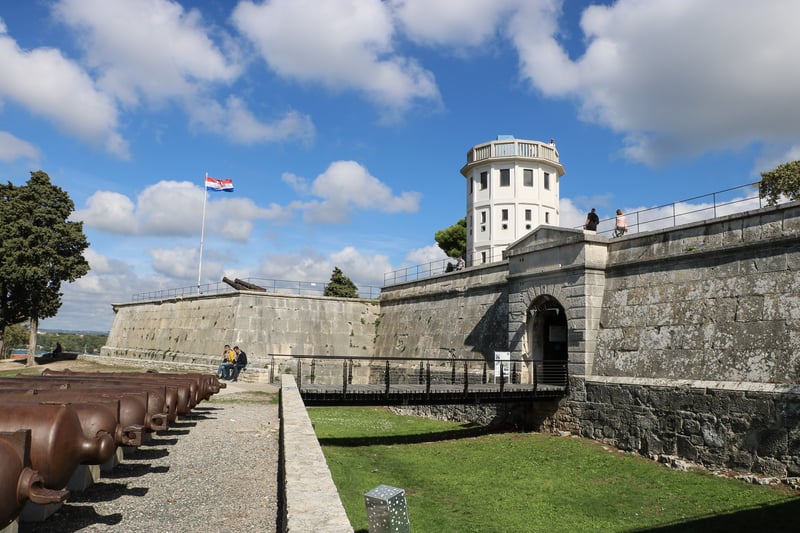
Day 1 PM – Stop for a coffee
Time for another sit-down! We’d recommend heading to Cafe Uliks (Ulysses), near the Arch of the Sergii. The cafe serves as a tribute to famed author James Joyce who lived in Pula in 1904 and 1905…although he wasn’t especially complimentary about the place! You can even have a drink with James – there’s a bronze sculpture of him at the cafe.
Day 1 PM – Dinner and Drinks
For a low-key but enjoyable first night in Pula, let’s do excellent pizza followed by drinks in one of Pula’s best bars. Asterix is considered to be one of the best pizza joints in town; the wide-ranging menu includes the Istriana with three meats or the House Special with mushrooms, gorgonzola and cream. If you can’t decide, you can choose a pizza made up of thirds of different flavours!
After you’ve gorged on pizza, head to Scandal Express, a dive bar-esque place that serves Istrian craft beer and has a great soundtrack.
Day 2 AM – Time to try out some oil
We’ve done enough outdoor sights, so let’s head inside to learn more about something that Istria (and Croatia) is very famous for. The House of Istrian Olive Oil explains the traditions, history and culture behind the production of this precious liquid gold – something that has occurred in Istria for over 2000 years. In fact, the Romans considered the olive oil produced in Istria to be the best in the Empire and it was exported – even back then – across Europe.
The Museum also teaches you about how olive oil is produced today and the health benefits associated with the oil. And, of course – in fact, probably why you’ll come to the museum – there are guided tastings on offer! Suitable for adults and kids aged 8+, three different tasting programmes are available; learn how to analyse oil and what the differences in oil varieties are. After you’ve finished, make sure to visit the shop to stock up on your favourites.
Alternative: If you’re travelling with kids and tasting oil is not on their agenda, spend the morning instead at Pula Aquarium. The largest aquarium in Croatia, it has a very wide collection of Adriatic and Mediterranean aquatic life, as well as tropical and freshwater fish and water life from Croatian rivers and lakes.
The aquarium is also home to a loggerhead turtle rescue centre that rehabilitates injured turtles from the Adriatic; over 180 turtles have so far been rescued, rehabilitated and returned to the sea. The aquarium is housed in a building that is also of interest – Fort Verudela is a 19th-century Austro-Hungarian fort that was constructed as a defensive building in Pula, which used to be the base of the Austrian navy.
Day 2 – Lunch
Day 2 will be a busy day for you, so you’ll need something quick and tasty! Pop into Street Food Two for salads, risotto, gnocchi and poke bowls. Alternatively, you may go for the Platinum tasting option at the House of Istrian Olive Oil (above) which includes tasty Istrian delicacies along with the oils. Or, if you’re going for one of the below PM options in the itinerary, have a quick bite to eat in Fazana before heading to the Brijuni islands, or head to the Safari Bar in Cape Kamenjak!
Day 2 PM – Excursion time to the islands or to gorgeous nature
Now you’ve had a fair amount of time exploring Pula itself, it would be ideal to head outside of town to see a little more of Istria. But don’t worry, we’re not going far! Unusually, Istria isn’t a part of Croatia that is well known for its islands. But one local island group, the Brijuni Islands, is one of Croatia’s eight national parks!
Boats to Veli Brijun, the largest of the Brijuni Islands, depart from the small town of Fazana which is a 20-minute drive away from Pula. Either take local bus 21 from the main bus station or take an Uber or Bolt to the port in Fazana. Be sure to check the boat timetable from Fazana to try and aim for a particular departure.
Once upon a time an upmarket destination for the Austro-Hungarian elite, the islands served as President Tito’s summer residence in the days of Yugoslavia. He received numerous dignitaries – as well as celebrities – on the islands.
There is still a safari park on the islands that is home to animals gifted to President Tito, including elephant Lanka, a llama, zebras, sacred cows and ostriches.
There’s also an olive tree that is believed to be 1600 years old – possibly the oldest in the Mediterranean – which still produces olives today from which oil is produced. And younger ones will be delighted by some rather incredible dinosaur footprints – over 200 exist across all of the Brijuni Islands – from creatures walking this part of the world around 100 million years ago. And there are many more sights besides!
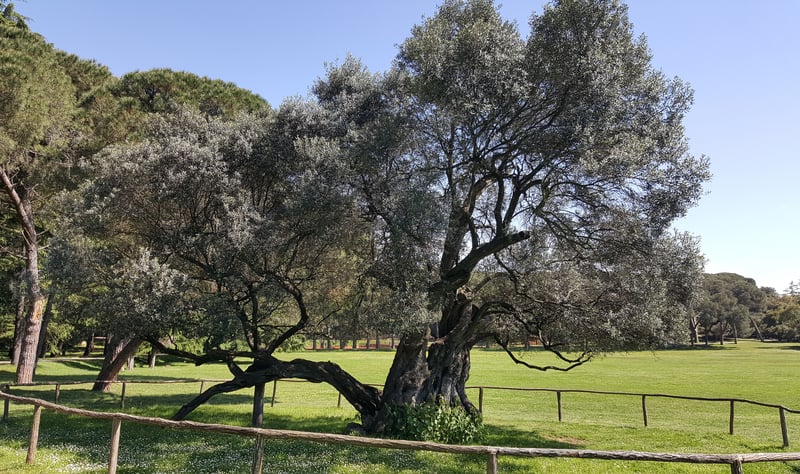
The best way of seeing Veliki Brijun in a short period of time is to board the tourist train upon arriving which will take you on a 1 hour tour of the island.
Alternative: Another fantastic afternoon day trip from Pula would be to Cape Kamenjak. Located on the southern tip of the island, the park is a glorious place to spend a few hours relaxing in and around the numerous coves and beaches (make sure to bring your swimming gear and towels) in a gorgeous natural setting. It’s possible to get a bus (number 28) from Pula Bus Station to Premantura, although it is then a couple of kilometres’ walk to the entrance of the park. It would be better to grab an Uber or Bolt car to take you there; it will be about a 20-minute drive from Pula.
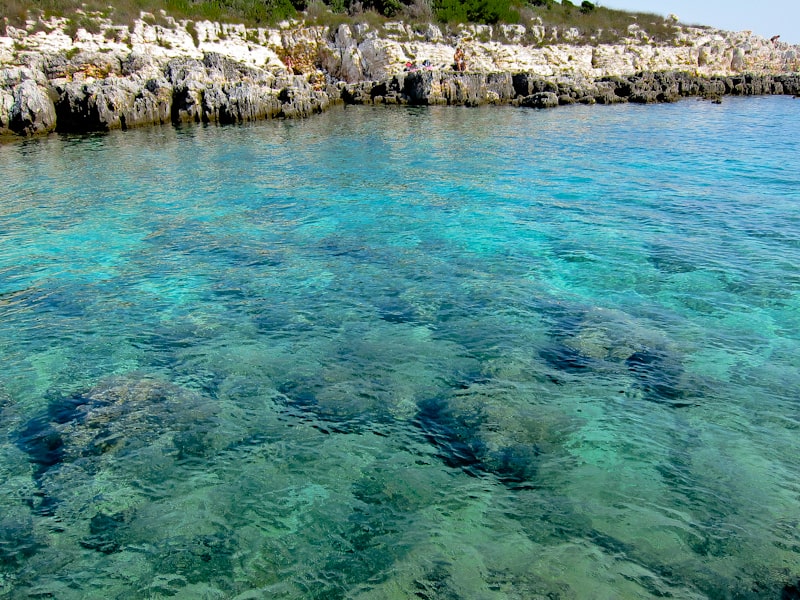
Alternative 2: Those of you who wish to sample a little more of what Istria has to offer, wine-wise, may want to join a local winery tour. Take a look at some of the Wine Tours from Pula on offer with tour company Viator, or head to the nearby Benazic or Trapan wineries.
Day 2 PM – Dinner
Treat yourself on your final night in Pula with fine dining with a view! Indulge in some excellent seafood dishes at Valli Fine Bistro which has a gorgeous view over the harbour and back to where you started this two-day itinerary – for you’ll also see the wonderful Arena in the distance too.
Round off your night with more Istrian wine – including organic and biodynamic options – at Wine Bar Sorsi.
Two Days in Pula – Getting Around
Assuming you are flying into the main airport in this part of the country, Pula Airport, it’s an easy transfer from there into the city using one of the airport shuttle buses. Generally timed to coincide with flight arrivals, buses will take you to the main bus station in Pula.
From here, you’ll likely find your accommodation is a short walk away. Alternatively, you can take a taxi (or Uber or Bolt vehicle) for the final hop to your place of stay.
Indeed, Pula is a small and very walkable city. We’d suggest that you spend most of your time on foot when staying here.
Two Days in Pula – Where to Stay
There’s a good choice of accommodation right in the town itself, and as you only have a couple of nights here you’ll want to base yourself somewhere that’s pretty central.
The Hotel Scaletta and the Hotel Amfiteatar are both small but smart 3-star options that are very centrally located, within easy walking distance to most of the above attractions.
If you really want to treat yourself, Grand Hotel Brioni is absolutely the place to stay. This 5-star hotel is located on the edge of town in a lush, pine-forest setting. There’s an outdoor infinity pool and private beach; many of the comfortable rooms have simply stunning sea views. The hotel was originally a rather grand hotel built in the 1970s; it was reopened in 2022 after a full refurbishment.
Take a look at our full guide to where to stay on our Accommodation in Pula page, which also includes hostels, apartments and more.
More info
Take a look at the Pula Tourist Office website for more information on what to see and do in this lovely town.
If you’re planning on visiting all of the city’s main sights, consider getting the Pula+ Card which will then give you entry into – for example – the Arena and the Temple of Augustus. It can be bought at the entrance to these attractions or from the tourist office.
